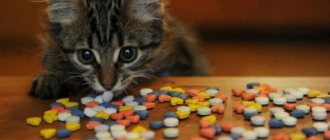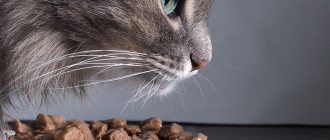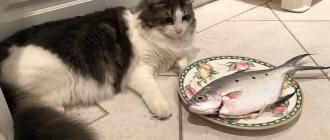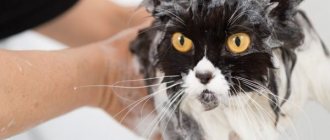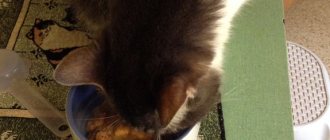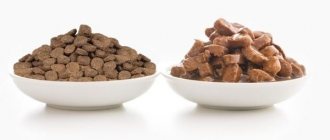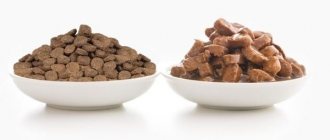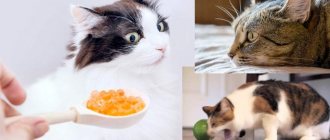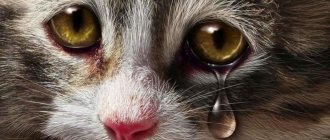How does the liver work?
The liver is the largest gland of the body, the main task of which is to neutralize and remove poisons from the body (including metabolic products), excess hormones, mediators, and vitamins. To do this she:
- filters out fat-soluble toxins, turning them into water-soluble substances;
- produces enzymes that break down drugs and other chemical compounds.
The more poisons in the body, the heavier the liver. Toxins kill her cells (hepatocytes), and regeneration takes time. While the new cell grows, the load on nearby tissues increases.
If there are too many poisons, hepatocytes can die en masse, then connective tissue appears in their place. Although it closes the hole, it is unable to perform the work of the liver. Intoxication of the body begins, which can cause death.
Other liver functions
Neutralization of poisons is the main, but not the only task of the liver. She:
- Participates in lipid and carbohydrate metabolism.
- Produces proteins, incl. albumins, which carry hormones and other substances to cells.
- Stores minerals, glycogen, triglycerides.
- Activates vitamins.
- Synthesizes substances that are involved in blood clotting.
- Produces bile acids and enzymes.
The liver processes bilirubin, a pigment formed after the breakdown of red blood cells. This is a very toxic substance, which the organ neutralizes and sends as part of bile to digest food. The pigment then passes into the stool and leaves the body.
Excess bilirubin in the blood is the cause of yellowing of the mucous membranes in animals. The pigment is sent not into the bile, but into the plasma, so the stool, to which it gives a dark color, becomes discolored. The urine becomes the color of beer because the bilirubin has to be excreted by the kidneys.
Symptoms of a diseased liver in animals
Failures in the liver negatively affect the functioning of all organs and systems. This explains the first symptoms of the disease - fatigue, bad mood, decreased activity, irritability, aggression. The appetite gradually worsens, the dog suddenly loses weight, thirst appears, and discharge from the eyes appears. The temperature may rise.
Over time, symptoms characteristic of a diseased liver develop:
- yellowing of the mucous membranes of the eyes, mouth, gums;
- digestive problems – vomiting, diarrhea, bloating;
- dark urine;
- seizures and other neurological problems;
- gastrointestinal bleeding due to poor coagulation, the appearance of ulcers;
- accumulation of fluid in the abdomen, due to which one may mistakenly assume that the pet has gained weight (extreme stage, a symptom of imminent death).
Causes of liver disease in animals
The liver destroys toxins through oxidative processes, so free radicals accumulate in it. In large quantities they are dangerous because they damage the gland and slow down cell regeneration.
The heavier the poisons that the organ must neutralize, the more free radicals the liver produces, the higher the risk of damage to hepatocytes. The solution is to reduce the cat or dog’s exposure to toxins.
Liver problems in pets are caused by medications and chemicals:
- Anthelmintic drugs. They must be given to prevent the development of parasites, but in no case exceed the dosage.
- Flea and tick medications, tablets are especially dangerous.
- Vaccination. The injection protects the pet from fatal diseases, but creates additional stress on the liver.
- Household chemicals – products for cleaning carpets, floors, furniture.
- Pesticides and herbicides are a problem often faced by pets living in the countryside or in the country.
- Nutritional supplements.
- Heavy metals.
Who's at risk
Liver dysfunction is common in older dogs and cats. Also among the reasons are obesity, prolonged fasting, stress, tattoos, microchips. Liver problems can be caused by:
- pancreatitis;
- oncology of other organs;
- sick kidneys;
- worms;
- viral, bacterial infections;
- autoimmune pathologies;
- hormonal imbalances.
The liver can fail due to a sudden change in nutrition (for example, when switching from natural food to ready-made food), an overdose of vitamins and minerals. Cheap food can cause poisoning.
Some dog breeds have a genetic predisposition to liver disease:
- Dobermans;
- Rottweilers;
- Yorkshire Terriers;
- cocker spaniels;
- Bedlington Terriers;
- West Highland White Terrier.
These breeds have a hereditary condition associated with copper accumulation in the liver. With the help of this substance, iron produces some enzymes, but excess copper causes damage to the proteins that bind it. The result is inflammation of the gland, cirrhosis.
Major liver diseases in animals
There are many pathologies that are caused by the liver. Diseases can be divided into 3 groups:
- Inflammatory infectious diseases - liver abscess in cats, leptospirosis, viral hepatitis, adenovirus type 1 in dogs.
- Inflammatory non-infectious – lymphocytic cholangitis in cats, chronic hepatitis in dogs.
- Non-inflammatory – hepatosis in cats, copper accumulation in dogs.
Hepatitis
Most often, dogs encounter infectious (viral) hepatitis - inflammation of the liver. The pathology is difficult, fast, and often ends in the death of the pet. Other types of hepatitis that occurs in animals are caused by worms and bacteria. Inflammation of the liver can be a consequence of diseases of the pancreas and digestive system.
Hepatosis
Hepatosis occurs more often in cats. The pathology develops due to the accumulation of fat in the liver cells, which leads to its degeneration. The disease is a consequence of obesity, hormonal imbalances, and poor nutrition, which cause inflammation of the liver. The pathology is dangerous; if left untreated, it often develops into cirrhosis.
Amyloidosis
The disease is characterized by a disorder of protein metabolism, when amyloid, a fibrous substance, is deposited in tissues and causes cell death. Pathology can affect different organs, incl. liver.
Cirrhosis
The disease develops slowly and usually ends in death. As liver cells die, they are replaced by connective tissue, and it cannot cope with its tasks. The animal dies from intoxication, thrombosis, and internal bleeding.
A characteristic sign of cirrhosis is ascites, the accumulation of fluid in the abdominal cavity. It puts pressure on the diaphragm, causing blood stagnation, ulcers, increased pressure in the liver area, and other problems.
Causes of cirrhosis in animals:
- low-quality food containing poisons;
- deficiency of selenium, pyridoxine, and some other elements;
- hepatitis, hepatosis, inflammation of the gallbladder;
- parasites (pyroplasmosis, toxocariasis);
- plague, enteritis.
Liver cancer
Cancer is a condition where cells begin to divide abnormally and do not die. They displace healthy tissues, but cannot replace them, which leads to the death of the body. Liver cancer often develops as a secondary disease when malignant cells from a tumor located in another part of the body enter the gland.
Less commonly, cancer occurs in the liver itself. It is usually a consequence of cirrhosis. Another reason may be long-term exposure to carcinogenic factors (eg, heavy metals).
By-products to increase calorie intake
Some parts of the carcass contain woefully little protein but are high in fat. And some, such as testes, are a source of protein and fat at the same time. Fatty by-products should not be given to cats with impaired liver or pancreas function, as well as animals prone to obesity. But they serve as an excellent energy boost, for example, for nursing cats or stud cats.
Testes (bovine, lamb)
Although the seeds are considered a delicacy in many cuisines around the world, they are quite difficult to find for sale. They don’t have to be included in your cat’s diet for it to be complete, but if the opportunity arises, be sure to let your pet try them.
Beef testes
The testes contain a lot of protein and fat, B vitamins and microelements (zinc, manganese, copper, nickel).
The testes are given raw or lightly boiled (7 minutes after boiling). Before giving them to a cat, remove the thick shell from the testicles and cut them into pieces. The norm is 5-10% of the diet, while it is permissible to feed the testes in a separate feeding, without mixing them with meat.
Beef udder
Udder is a cheap and nutritious product, but I recommend feeding it to cats with caution. The dry udder consists mainly of fat and rough connective tissue, which is difficult to digest
The milk udder has a more delicate consistency and a pleasant sweetish milky smell and taste. But cows are rarely slaughtered for meat during lactation without a good reason; usually these are sick animals. Therefore, the milk udder must be carefully checked for signs of mastitis (pus, inflamed areas).
The udder contains about 12% incomplete protein and 14% fat. It is given to cats in order to increase the calorie content of the diet, in an amount of no more than 5% of the total diet. This product is fed both raw and cooked (the broth after cooking is not used for feeding). The udder has a rubbery consistency, it is very difficult to chew or bite off a piece, so you need to cut it into convenient pieces in advance. The easiest way to cut a frozen product is to use a very sharp knife.
Brain
Beef brains can be difficult to find commercially because they are perishable. But if you give your cat chicken heads, then when she eats them, she also gets brains. The value of brains lies in the fats they contain. These are omega fatty acids, lecithins and cholesterol. The brain also contains a lot of choline (B4).
Beef brains, if you were able to buy them, are not fed in their pure form, but are added to the meat mixture. The high fat content of this offal causes severe diarrhea in cats if the dosage is overdone. Brains are given in the amount of 2% of the total diet. They can be especially useful for cats exhausted by pregnancy and lactation, as they increase the calorie content of food.
Therapy
To treat and restore liver function, the doctor prescribes medications from the following groups:
- Hepatoprotectors (Hepatovet, Hepatolux, Hepasafe) - improve metabolic processes in the liver, increase its resistance to toxins, and stimulate cell regeneration.
- Choleretic drugs (preparations with milk thistle) - accelerate the formation of bile in the liver, promote its removal from the gallbladder to the intestines.
- Sorbents (Simbosorb, EnteroZoo) - absorb toxins, reducing the load on the liver.
For cirrhosis, the doctor may prescribe injections of glucose, insulin, and vitamins. Diuretics will help remove ascites. To relieve inflammation, hormonal drugs are prescribed. Cancer requires chemotherapy and surgery.
Unfortunately, cirrhosis and liver cancer often result in death, but therapy can prolong the life of a pet and relieve pain.
Diet
Treatment of any liver disease involves diet. Proper nutrition will reduce the load on the gland, which promotes recovery, and if healing is not possible, it will improve your well-being. Give food that is light but nutritious, rich in all nutrients. Products should not irritate the digestive tract.
Discuss the diet with your veterinarian. He will recommend the right food if the animal is on a natural diet, and will recommend healthy products. If your dog has copper hepatopathy, your doctor will prescribe a diet low in copper and high in zinc.
Natural products
All products must be exceptionally fresh and of high quality. Any blow to the liver and digestive system as a whole can now be disastrous. Food must be warm, room temperature or slightly warmer. Vegetables, fish and meat are pre-cooked.
If after the first days of the diet the cat is recovering, its appetite has improved, the diet can be diversified. If not, continue to give the broth, you can add a little rice or oatmeal broth.
10 foods included in the hepatitis diet:
- light fish or meat broth (it is better to drain the first broth, so it will be less fatty);
- rice decoction;
- oatmeal broth (oatmeal in bags with additives and sugar is definitely prohibited);
- herbal infusions aimed at maintaining the immune system, liver and digestive system;
- boiled chicken breast (start giving at the end of the first week of the diet, chopped, in small portions);
- boiled low-fat fish (except river fish);
- boiled beef (by the end of the first week, minced in a blender or meat grinder);
- low-fat cottage cheese;
- kefir 1%;
- boiled carrots (for better feces formation).
10 foods prohibited for hepatitis:
- fatty fish;
- pork, lard;
- udder (too fat);
- milk (any);
- sour cream;
- vegetables that cause flatulence;
- sugar;
- salt and spices;
- smoked meats;
- roast;
First of all, everything fatty, as well as products containing salt and spices, are prohibited.
The animal must be stimulated with vitamin supplements. Vitamins B, C and K are especially important for liver diseases. When choosing vitamins, it is better to consult a veterinarian.
Prevention
Monitor your pet's diet. Do not feed your dog or cat food from the table. Buy only high-quality, proven food. If your pet is on a natural diet, give raw lean meat, boiled fish, fresh vegetables and fruits. Wipe or steam the greens for better absorption. Avoid sausages, sausages, do not give rotten, bad food.
Other recommendations:
- Remove toxins that may harm the liver. This means that you need to avoid unnecessary pesticides and medications. Avoid frequent cleaning using household chemicals.
- Synthetic vitamins and minerals can be given strictly according to the instructions, without exceeding the course duration and dose.
- Supplement with the antioxidants glutathione, the amino acids N-acetylcysteine (NAC) and S-adenosylmethionine (SAMe). They bind to toxins in the liver before the poisons can damage the gland. Be sure to consider the dosage.
- Get vaccinated against deadly diseases on time.
Advantages of treatment in our hospital
- Doctors. Diagnosis and treatment of liver lesions at the hospital on Yauza are carried out by highly qualified specialists with extensive practical experience in the field of hepatology and gastroenterology.
- Diagnostic accuracy. The latest laboratory and instrumental equipment used in our hospital is highly accurate, which allows us to accurately make diagnoses.
- Individual approach. We take into account the characteristics of each clinical case and patient when selecting diagnostic methods, drug treatment, herbal medicine, diet, etc.
- Efficiency. We value your time and know how important it is to be able to begin treatment without delay, so we try to serve patients as quickly as possible.
- High quality of service provision. The quality of our services fully meets the high requirements of international standards.
- Comprehensive support. By contacting us, patients can count on comprehensive support: our specialists will answer any questions, give recommendations, and, if necessary, provide psychological assistance.
